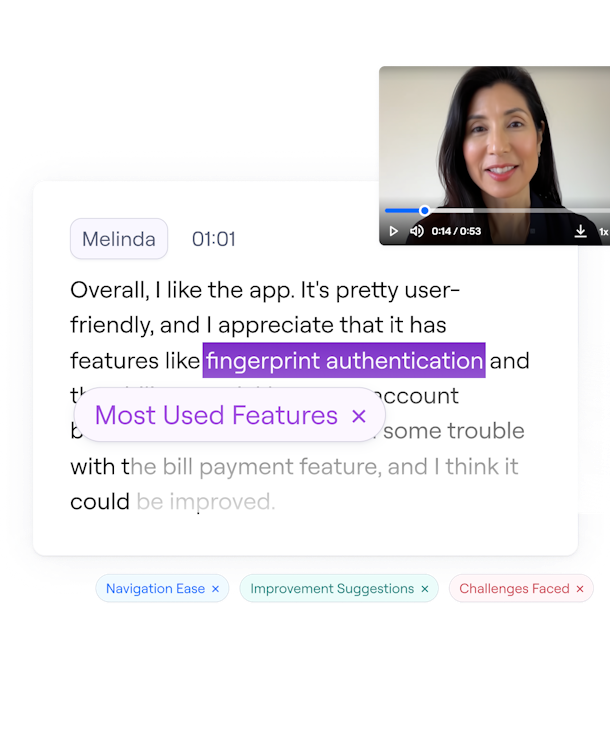Thematic analysis is an excellent method for extracting actionable insights from qualitative data. But it’s undeniably time-consuming. You need to:
- Read through hours of interview transcripts
- Find repeating ideas and sort them into codes
- Set codes into overarching themes for refinement
- Organize insights into reports and share them with your team
AI thematic analysis can accelerate the analysis process, reducing your time spent on the long and winding road to insights—freeing up more time to share and action those findings.
How AI enhances the thematic analysis process in UX
Artificial intelligence (AI) enhances thematic analysis by automating steps of the process and reducing the time needed to gain deeper insights. This makes it a great choice for resource-stretched Research teams that want to accelerate coding, theme identification, and summary creation after conducting qualitative research.
Here’s how AI thematic analysis compare to manual analysis:
Manual | AI-powered | |
|---|---|---|
Time and efficiency | Often time-consuming | Algorithms can quickly scan and code large amounts of data |
Scalability | Becomes increasingly difficult as data size grows | Can easily handle growing data sets |
Human involvement | Requires close reading, expertise, and involvement in every step | Only requires set up and monitoring, but human insights are still important |
Potential for error | Can be affected by human error and subjective bias | Standardized methodologies reduce error and bias in most cases, but still must be reviewed |
When can AI support thematic analysis?
AI is especially helpful in supporting thematic analysis when dealing with a large amount of qualitative user data. Sifting through so many interview transcripts is not only overwhelming, but it can tie up your resources when they’re needed elsewhere.
AI can also support thematic analysis:
- When you want to complement your quantitative data with qualitative insights (think UX surveys with a mix of open-ended and closed-ended questions)
- When you need to speed up finding an initial grouping and start point for deeper, human analysis
- When you need to continuously analyze increasingly large data sets over time
- When you’re approaching a project deadline and you need insights fast
Top 5 AI thematic analysis tools
Your success with AI-powered thematic analysis greatly depends on the tool you choose for the job.
Prioritize thematic analysis software that:
- Has a user-friendly interface so you don’t get lost wading through data
- Has the ability to analyze large volumes of qualitative data with AI
- Lets you create, edit, and delete codes and themes so you can participate in analysis
- Integrates seamlessly with your other tools
- Has a robust support system, including a help center, customer support team, FAQs, and an amazing Content Hub (sound familiar? 👀)
- Is comprehensive and lets you use a range of UX research methods
- Fits within your budget
We realize those are a lot of boxes to tick, which is why we’ve scoured the web (and our own product page) for the top five AI thematic analysis tools. Let’s cut to it.
1. Maze
Maze is a leading user research platform that makes gaining actionable insights easier and faster.
It comes with a suite of moderated and unmoderated UX research methods like Interview Studies, Feedback Surveys, Card Sorting, and Website Testing—just to name a few!
With a research recruitment Panel of over 3 million testers, AI-powered analysis, and reporting capabilities, Maze covers every step of the user research process, from recruitment to insights.
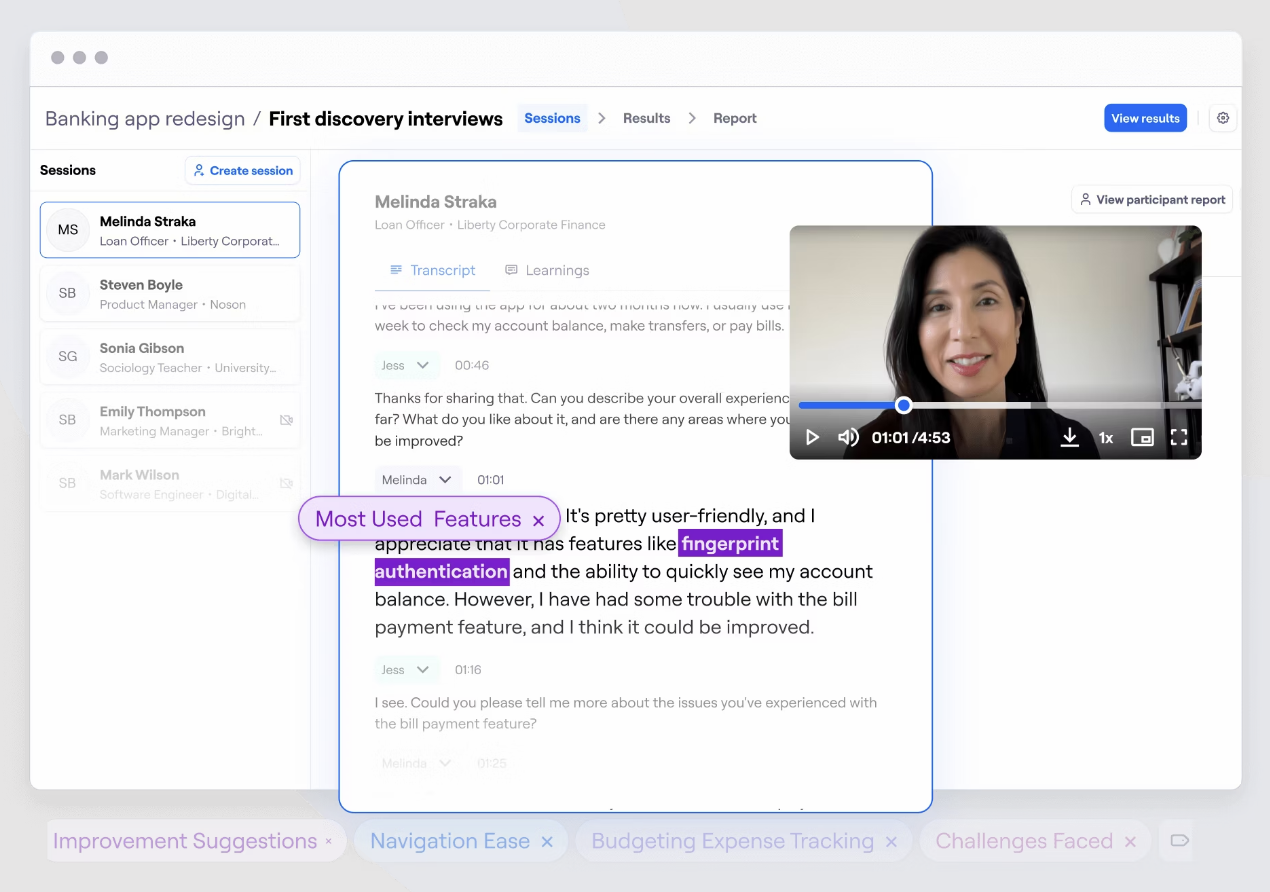
Easily tag themes and categorize insights with Maze Interview Studies
How does Maze support AI thematic analysis?
Maze offers AI-powered thematic analysis for Interview Studies. After automatically transcribing your interview sessions, it groups responses by themes and finds patterns in a matter of minutes. If you’re looking to dive deep into data, Maze also supports manual analysis, sentiment analysis, and automated summaries.
Pros and cons
Pros | Cons |
|---|---|
|
|
Pricing
Maze has a:
- Free plan
- Starter plan at $99 per month
- Organization plan with custom pricing
2. ChatGPT
ChatGPT is a generative AI model developed by OpenAI. Often considered the poster child of AI models, it generates human-ish answers by analyzing a large number of web pages from the internet.

How does ChatGPT support AI thematic analysis?
ChatGPT acts as an assistant and can complete tasks such as analyzing data or categorizing interview transcriptions into groups, codes, and themes. Using ChatGPT, you can generate answers based on instructions and the information you provide.
Pros and cons
Pros | Cons |
|---|---|
|
|
Pricing
ChatGPT has a:
- Free version
- Two personal plans—Plus for $20 per month and Pro for $200 per month
- Business plan costing $25 per user/month
3. Looppanel
Looppanel is a user research analysis and UX research repository platform. It offers various tools for streamlining data and insight management, such as an AI notetaker, qualitative analysis, and reporting capabilities.
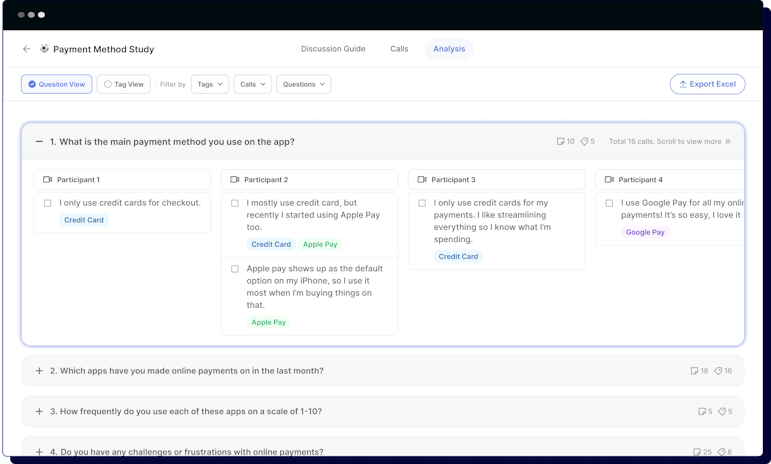
How does Looppanel support AI thematic analysis?
Looppanel has various AI-powered features, such as automatic transcription, and it can organize responses, group them into codes and themes, and extract video clips of key quotes.
Pros and cons
Pros | Cons |
|---|---|
|
|
Pricing
Looppanel has a:
- Solo plan for $30 per month
- Pro plan for $350 per month
- Custom Enterprise plan
4. NVivo
NVivo is a collaborative quality analysis platform made by Lumivero. The tool allows UX researchers to import, organize, and explore their data and extract insights with the help of AI-powered features. NVivo supports a wide range of data types, including text, audio, video, and even social media.
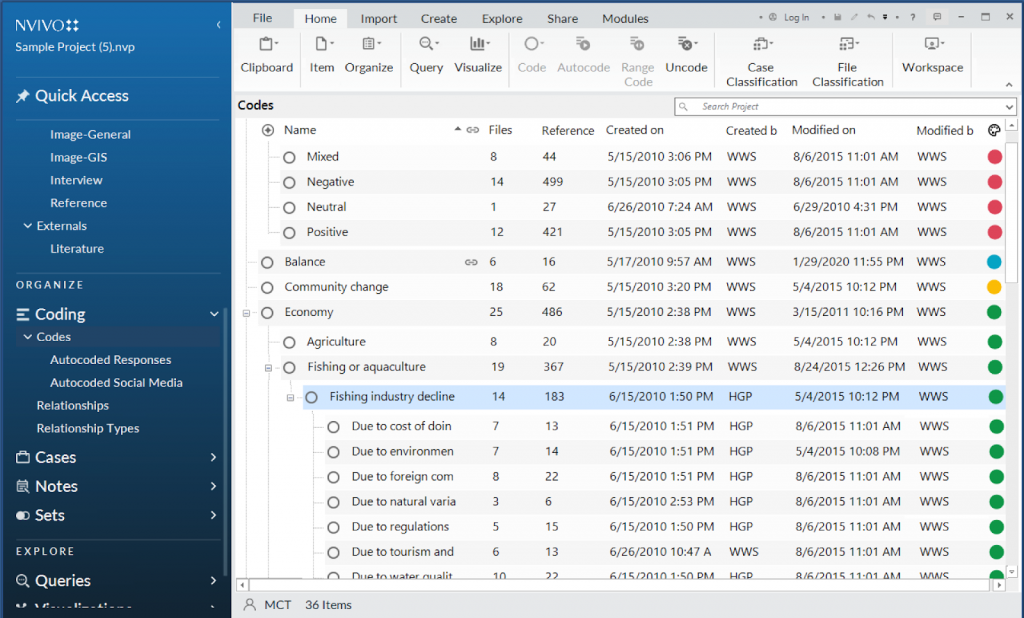
How does NVivo support AI thematic analysis?
NVivo has AI-powered coding, automatically organizing data into overarching themes.
Pros and cons
Pros | Cons |
|---|---|
|
|
Pricing
NVivo costs between $118 and $2,038, depending on your use case. It offers product variations for academics, governments, and commercial.
5. User Evaluation
User Evaluation is an AI-driven platform designed to streamline customer research and help businesses uncover valuable insights. It offers a variety of features, from qualitative analysis to reporting, along with a range of collaboration options for quick sharing.
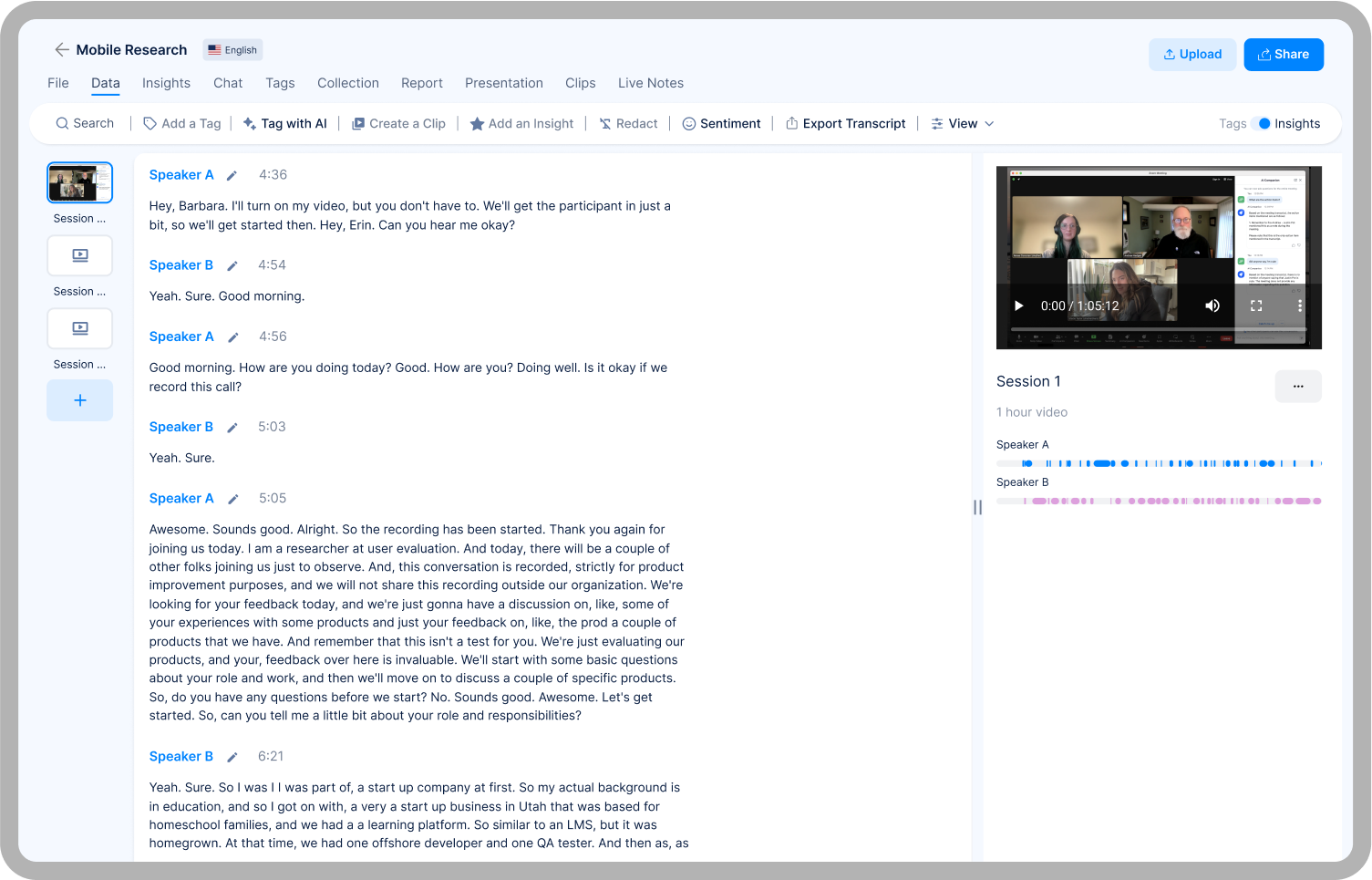
How does User Evaluation support AI thematic analysis?
User Evaluation uses AI to quickly convert interview transcripts into codes, themes, and insights. Like Maze, it also offers user sentiment analysis and creates stakeholder-ready reports.
Pros and cons
Pros | Cons |
|---|---|
|
|
Pricing
User Evaluation has a:
- Free plan
- Basic plan for $19 per month
- Standard plan for $49 per month
- Plus plan for $99 per month
Ethical considerations of using AI-powered thematic analysis
AI-powered thematic analysis is efficient—no doubt about it. But it’s not without ethical concerns. Factor in these considerations before you start analyzing qualitative data to ensure you’re using AI the right way.
Consent, data privacy, and security
When you add AI into your thematic analysis workflow, you’ll need to explicitly state how you’re using it in your process. Some people aren’t comfortable with their data being used by machine learning (ML) models.
Besides being upfront and transparent about AI in your written consent forms, make sure you’re also in compliance with regulatory laws such as the General Data Protection Regulation (GDPR). Implement security measures to protect user data from unauthorized access, breaches, or misuse of sensitive information.
Bias
AI makes mistakes. While supremely efficient at analysis, it’s far from the perfectly neutral robot many enthusiasts make it out to be. If there's bias in your model’s training set, there will be bias in the results, too.
Bias isn’t necessarily a product of data sets, either. Some machine learning algorithms produce skewed results because they aren’t aligned with real-world diversity.
For example, an analysis tool might be trained overwhelmingly on one demographic group, leading to skewed results that are unrepresentative of the whole population. The best way to mitigate this is to ensure diversity in your chosen participants.
Over-reliance
Sometimes AI will generate shallow results. It often fails to see the nuances that come with body language and implied gestures. If you don’t continuously complement AI findings with human-found insights, you might end up doing your entire user base a disservice.
By over-relying on AI, UX researchers miss the chance to immerse themselves in qualitative data. And without deep knowledge of user needs, insights can end up harming the product instead of helping.
Thematic analysis with Maze: AI-assisted UX research
So, what does AI thematic analysis look like with Maze?
Let’s say you’ve just conducted a round of user research sessions using Maze Interview Studies. The deadline for your project looms just around the corner, and stakeholders are hungry for insights.
This scenario is where Maze’s AI-powered analysis feature can be hugely helpful. After results come pouring in, Maze lets you automatically identify themes within your transcripts.
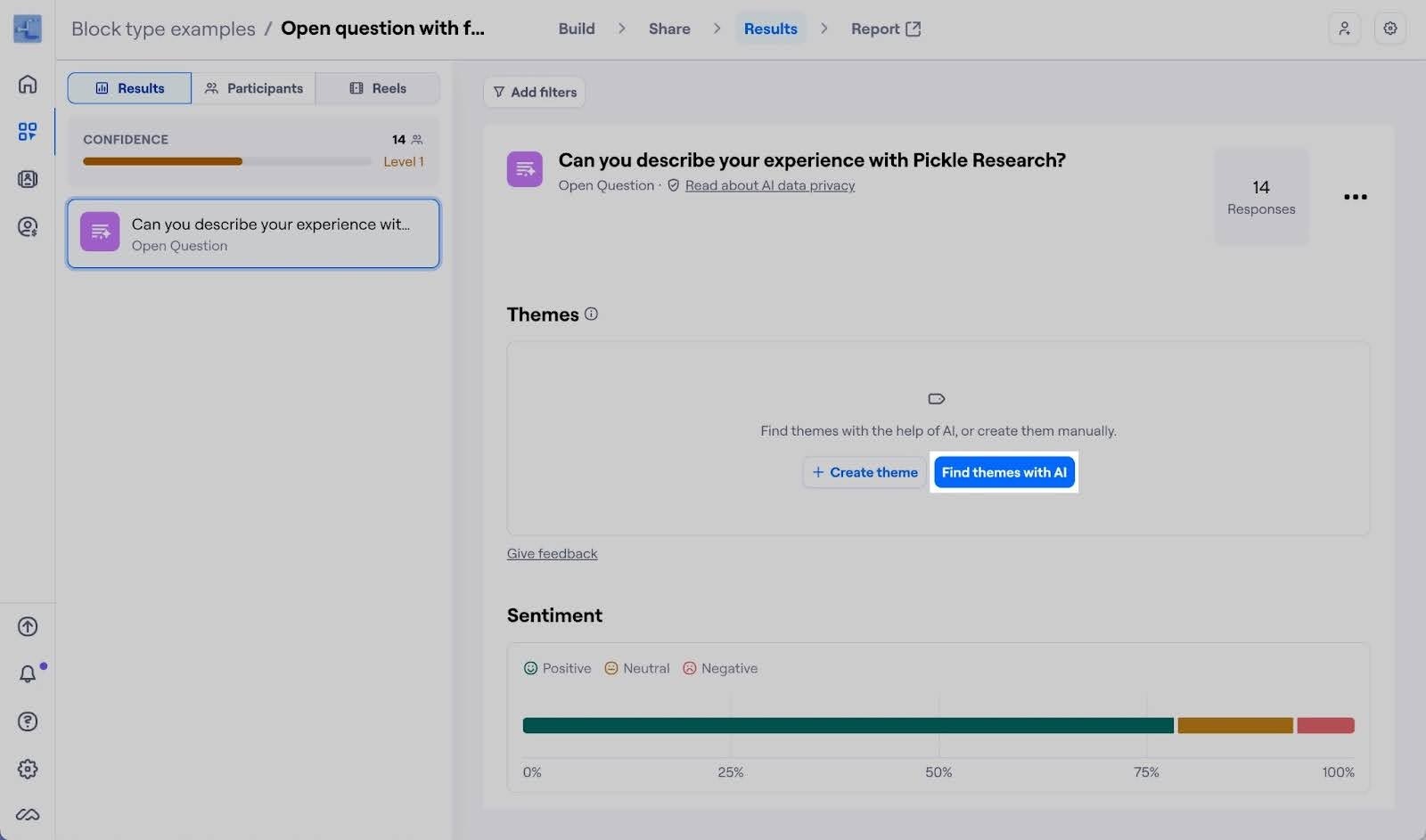
Then, you can head on back to the results page to review your newly created themes.
Maze will show you:
- A logical name for each overarching theme
- A color-coded tag
- The percentage of responses that share the theme
- The number of responses that fit into the theme
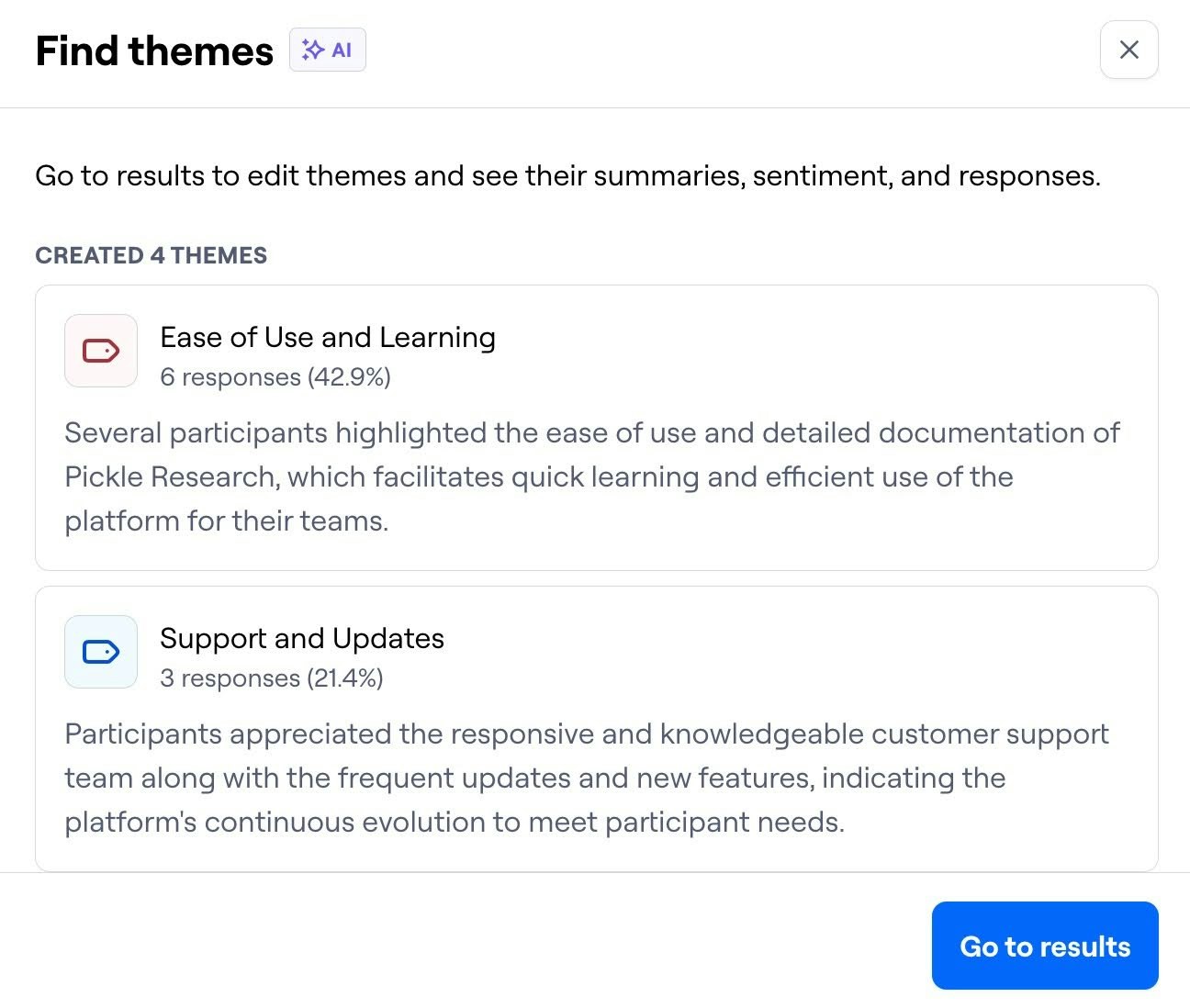
Think it missed something? You can always go back and create manual themes based on your transcripts and assign responses as desired.
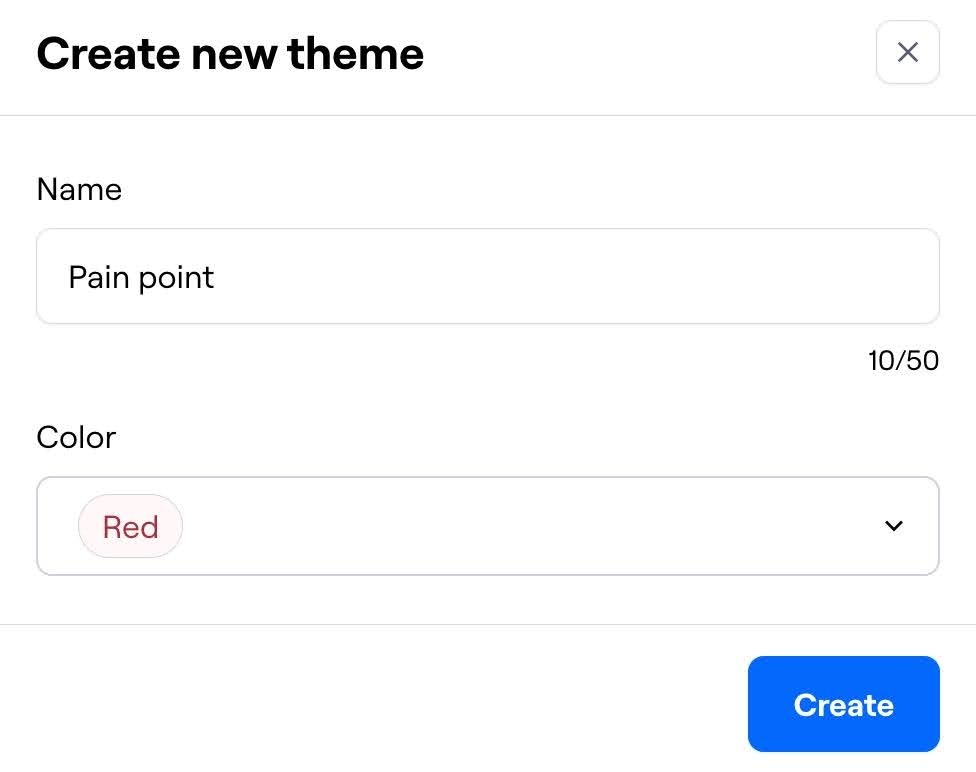
Maze also automatically generates summaries and reports based on your new themes and insights—taking you from user interview transcripts to shareable reports with just a few clicks!

Optimize UX research with AI tools for thematic analysis
AI puts your transcripts on the fast track to qualitative insights, minimizes errors, and handles large data sets at scale. While it can certainly augment thematic analysis, AI can’t do the whole thing for you—especially if you want in-depth insights.
The best way to do it is with a UX research tool like Maze. Not only will you be able to automate thematic analysis, but you can also recruit, design, deploy, and analyze all your UX research projects with the help of Maze’s AI-powered features.
Frequently asked questions about AI thematic analysis
Can you use AI for thematic analysis?
Can you use AI for thematic analysis?
Absolutely! AI can automatically make summaries, find codes, and create overarching themes by analyzing your user interview transcripts. Many AI tools for thematic analysis will also let you make manual edits throughout the qualitative data analysis. In fact, it’s one of the main use cases of AI in UX research.
What are the four types of thematic analysis?
What are the four types of thematic analysis?
There are four types of thematic analysis:
- Inductive: Themes naturally emerge from the data
- Deductive: A researcher applies an existing theory or framework to identify themes
- Semantic: Identifies themes based on the surface level of data
- Latent: Goes below the surface-level meaning of words to find what is implied, not just explicitly stated
Can ChatGPT do thematic analysis?
Can ChatGPT do thematic analysis?
ChatGPT can augment thematic analysis for qualitative research and speed up the process of reaching insights. After inputting transcripts into the model, you can tell it to label segments of text that are potentially useful as codes, group similar codes into themes, and refine them.
However, you’ll still want to review any codes or themes yourself before accepting them as insights. This is because AI algorithms like ChatGPT can’t properly analyze the nuances of human feedback, such as body language, tone, or emotions. It can also “hallucinate,” or skew data when trying to fill in gaps or provide surface-level insights.





